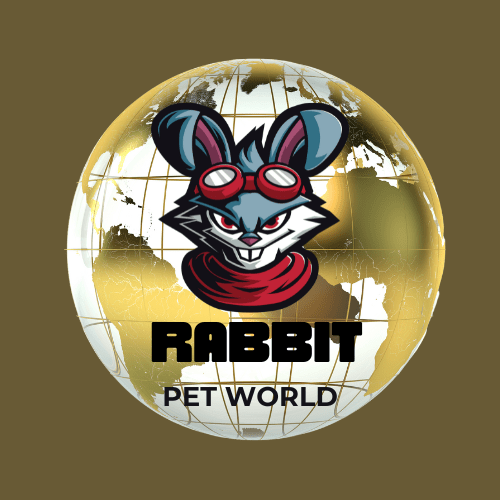If you are planning or looking for a pet rabbit that is big on personality and even bigger in size, just like your pet dog, then the Flemish Giant Rabbit might be the perfect choice! For you, the Flemish Giant rabbit is truly the gentle giant of the rabbit world.
These gentle giants are one of the largest and oldest rabbit breeds, known for their incredibly docile personality, large size, and uniqueness as pets. They are also excellent as show pets or even for rabbit meat production. It is essential to know the characteristics of a Flemish giant rabbit before bringing it home.
In this blog post, we will cover everything you need to know about Flemish Giant Rabbits, from their history and personality to their care requirements, pros and cons and health tips. By the end, you will be ready to bring home one of these wonderful bunnies with confidence!

- The Fascinating History of the Flemish Giant Rabbit:
- Flemish Giant Rabbit Size and Weight: How Big Do They Get?
- Flemish Giant Rabbit Characteristics: Personality and Temperament:
- Flemish Giant Rabbit Care Guide:
- Common Health Issues in Flemish Giants & Prevention Tips
- Flemish Giant Rabbit Colors: A Rainbow of Options
- Flemish Giant Rabbit Lifespan: How Long Do They Live?
- Flemish Giant Meat: Considerations for Homesteaders:
- Where to Buy a Flemish Giant Rabbit: Responsible Sources
- Conclusion: Is a Flemish Giant Rabbit Right for You?
- Flemish Giant Rabbit FAQ: Your Top Questions Answered:
The Fascinating History of the Flemish Giant Rabbit:
The Flemish rabbit is unique, and its history and origin are equally distinctive; we will attempt to explore this fascinating background.
Origins in 16th-Century Flanders:
The Flemish Giant Rabbit traces its roots back to the Flanders region of Belgium in the 1500s, making it one of the oldest domesticated rabbit breeds. Historians believe early breeders crossed large local rabbits with other European breeds, possibly including:
- The now-extinct “Stone Rabbit” (Steenkonijn), named for weighing about one stone (3.8 kg/8.4 lbs)
- The European Patagonian rabbit (unrelated to South American wild rabbits)
Initially, breeders bred these rabbits for practical reasons—their thick fur provided warmth, and their substantial size made them valuable for meat production.
Development and Standardization of Flemish Giant Rabbits (1800s):
By the middle of the 19th century, selective breeding in Belgium and England refined the Flemish rabbit breed’s size and temperament. Key milestones:
- 1860s: Belgian veterinarian Oscar Nisbett documented early selective breeding efforts.
- Albert van Heuverzwijn in Belgium wrote the first official breed standard in 1893.
- 1890s: Exported to America to improve meat rabbit stock during the “rabbit boom.”
Flemish Rise to Popularity (20th Century):
- 1910: Gained attention in U.S. livestock shows.
- 1915: The National Federation of Flemish Giant Rabbit Breeders formed to promote the breed.
- 1924: Officially recognized as a charter breed by the American Rabbit Breeders Association (ARBA).
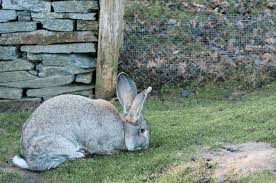
The Flemish Giant Today:
Modern Flemish Giants retain their historic size but are now primarily kept as companion animals.
- Flemish rabbits are Companion animals with their calm demeanor, they suit families.
- They serve as ambassadors for rabbit welfare, challenging stereotypes about rabbits with their intelligence.
Did You Know? The breed’s longevity is a testament to its adaptability. Although their role in meat and fur production declined due to a high bone-to-meat ratio, their gentle nature made them favorites for the following purposes:
- Show Rabbits (Prize for Their Size and Shape)
Fans of rabbit shows love Flemish Giants because they are so big and have beautiful shapes. They are very tall and friendly, which makes them strong competitors in shows. Breeders and fans love showing off their well-balanced bodies and striking looks.if You wish to participate in rabbit exhibitions, you need this breed of rabbit to win ribbons at rabbit shows.
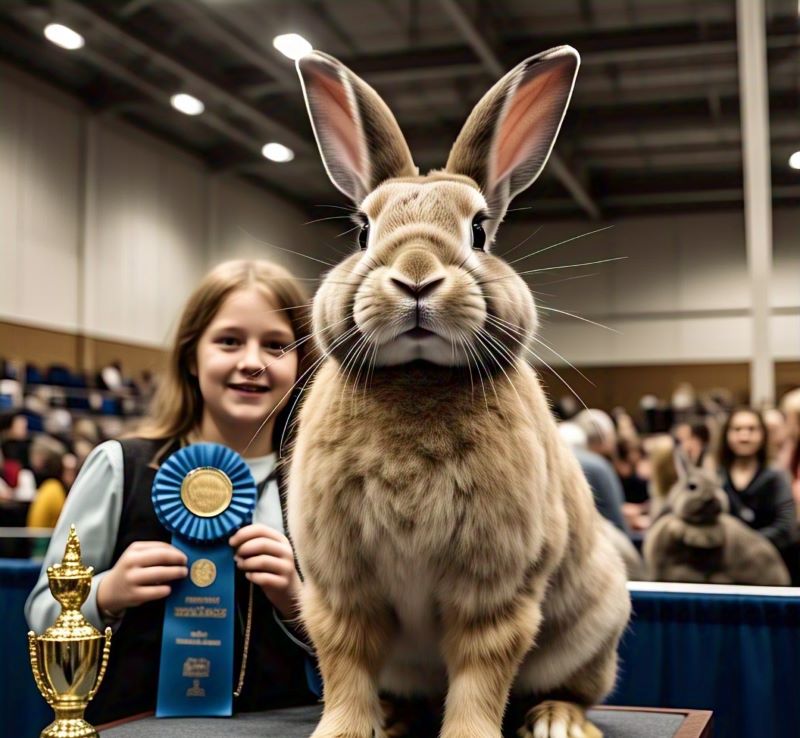
- 4-H projects (how to teach kids how to take care of animals)
Flemish Giants are great for 4-H programs because they teach kids about responsibility and taking care of animals. Because Flemish rabbits are calm in nature, they are great for training and bonding with young trainers. These gentle giants teach us a lot about being patient, eating well, and breeding. A great choice for getting the next generation interested in rabbits!
- Beloved Pets (Thanks to Their Dog-Like Personalities)
Not only are Flemish Giants big, they are also friendly, loyal, and surprisingly dog-like! They love being around people and will often follow their owners around like dogs. Because they are calm, they are great for families and people who have never had a pet before. Are you looking for a pet that is both soft and fun? Get to know the Flemish Giant!
Flemish Giant Rabbit Size and Weight: How Big Do They Get?
When we talk about Flemish Giant rabbit size, we’re discussing one of the most striking features of this breed:
- Average weight: 15-22 pounds (some reach 30+).
- Length: 2.5 to 4 feet when stretched out.
- Ear length: 5 to 8 inches.
- Height: Between 14 to 18 inches at the shoulder.
The Flemish Giant rabbit’s weight makes them comparable to small dogs, with males (bucks) typically larger than females (does). Their substantial bone structure and muscular bodies contribute to their impressive stature.
Fun Fact: The current world record holder for largest rabbit was a Flemish Giant named Darius, weighing 49 lbs!
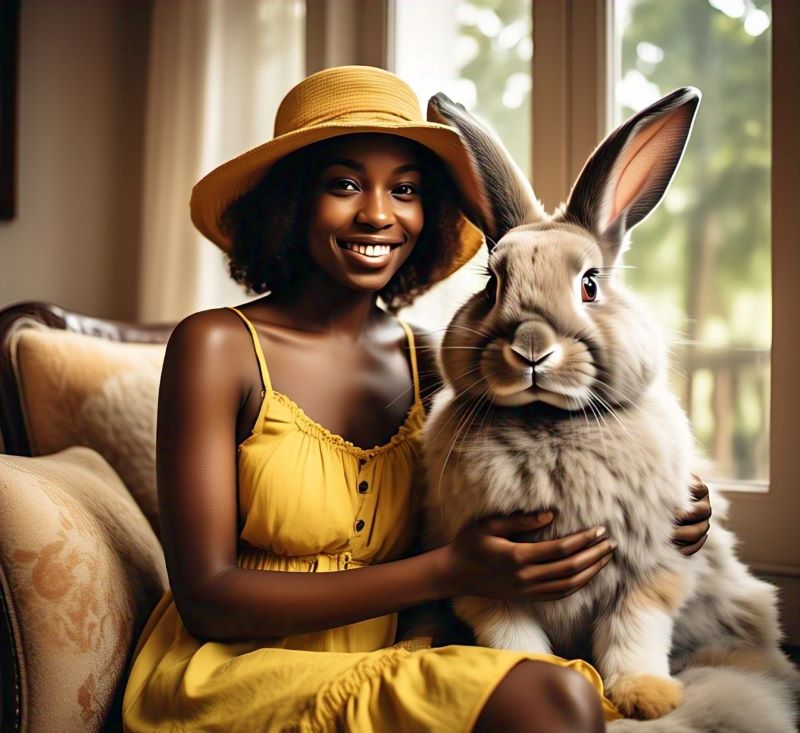
Flemish Giant Rabbit Comparison Chart:
For your better understanding look at this comparison table of the Flemish Giant Rabbit vs. other giant rabbit breeds, highlighting their size, weight, and key differences:
| Breed | Average Weight | Length | Ear Length | Shoulder Height | Key Features |
| Flemish Giant Rabbits | 15–22 lbs (up to 30+ lbs) | 2.5–4 feet | 5–8 inches | 14–18 inches | Largest breed, muscular, docile |
| Continental Giant Rabbits | 16–25 lbs | Up to 4 feet | 6–8 inches | 16–20 inches | Similar to Flemish, often longer fur |
| Checkered Giant Rabbits | 11–16 lbs | 2–3 feet | 5–6 inches | 12–16 inches | Distinct black/blue markings, leaner |
| Giant Chinchilla Rabbits | 12–16 lbs | 2–3 feet | 5–6 inches | 12–16 inches | Silver-gray fur, commercial body type |
| French Lop Rabbits | 10–15 lbs | 2–2.5 feet | 5–7 inches | 12–16 inches | Floppy ears, stocky build |
| English Lop Rabbits | 9–12 lbs | 2–2.5 feet | 8+ inches | 10–14 inches | Extremely long ears, slender body |
Flemish Giant Rabbit Characteristics: Personality and Temperament:
Flemish Giant Rabbits are known for their gentle, docile, and friendly personalities, making them excellent companions for families, singles, and even first-time rabbit owners. Although Flemish rabbits have massive size, they are often described as “gentle giants” due to their calm and patient demeanor.
Many enjoy being petted and can even learn to tolerate—or appreciate—being held with proper handling. These rabbits are intelligent and can be litter-trained, recognizing their owners and showing affection in subtle ways, such as nudging for attention or flopping down contentedly.
While generally laid-back, some Flemish Giants display playful, curious tendencies, especially when given space to explore. Their easy going nature, combined with minimal aggression, makes them one of the most beloved giant rabbit breeds for both pets and show animals.
1. Gentle and Docile Nature:
- Flemish Giants are typically calm, patient, and friendly, making them excellent pets for families, including those with children (under supervision).
- They are less skittish than smaller breeds and tend to be more relaxed when handled properly.
2. Social-able and affectionate:
- Many Flemish Giants enjoy human interaction and can form strong bonds with their owners.
- They have the ability to follow their owners around, nudge for attention, and even tolerate light cuddling, although not all of them find it enjoyable.
3. Intelligent and curious:
- These rabbits are smart and can learn simple commands or tricks with positive reinforcement.
- They appreciate mental stimulation, such as toys, tunnels, and puzzle feeders.
4. Laid-Back but playful:
- While not as hyperactive as smaller breeds, they still enjoy playtime and exploring their environment.
- Some may “binky” (happy jumps) or flop over when content.
5. Good with Other Pets:
- With proper introductions, they can coexist peacefully with other rabbits or even calm cats/dogs.
6. Minimal Aggression:
- Flemish Giants are rarely aggressive but may grunt or thump if frightened.
- Spaying/neutering helps reduce territorial behaviors.
7. Adaptable but Needs Space:
- Due to their large size (up to 20+ lbs), they need ample room to move comfortably.
- The Flemish thrive in indoor environments where they can interact with their family.
Potential Challenges:
- Their size means they require strong enclosures and more food/litter space.
- Without socialization, they may become shy or aloof.
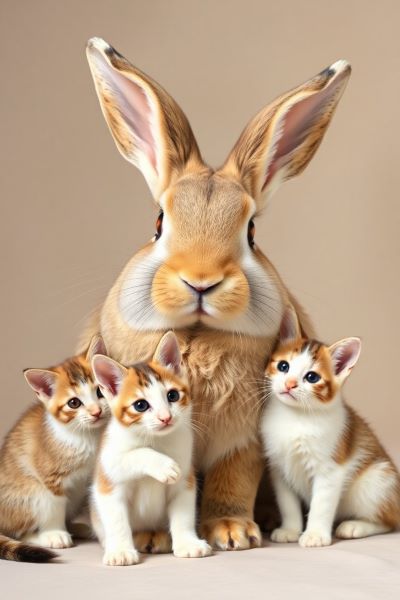
Look at this comparison chart of the Flemish Giant Rabbit’s personality and temperament with other large breeds :
| Breed | Temperament | Comparison to Flemish Giant |
| Flemish Giant | Gentle, docile, friendly, calm, and adaptable. | The standard for a laid-back, easygoing giant. |
| Continental Giant | Playful, energetic, mischievous, and clownish. | More active and spirited than the Flemish. |
| Checkered Giant | Alert, active, and sometimes high-strung. | Less relaxed; needs more stimulation than the Flemish. |
| French Lop | Extremely affectionate, cuddly, and people-oriented. | More clingy and attention-seeking than the Flemish. |
| Giant Chinchilla | Intelligent, good-natured, but can be reserved. | More independent and shy compared to the Flemish’s friendliness. |
This table highlights how the Flemish Giant’s balanced temperament makes it one of the most versatile and beginner-friendly giant rabbit breeds.
Flemish Giant Rabbit Care Guide:
1. Housing: Big Bunny, Big Space!
Since Flemish Giants are huge, they need much more space than regular rabbits.
Minimum Cage Size:
- 36” (W) x 36” (H) x 120” (L) for one rabbit.
- Double the space if housing two.
Best Housing Options:
- Indoor Pen: Best for temperature control and bonding.
- Outdoor Hutch: Must be predator-proof and weather-resistant.
Pro Tip: Let them roam in a rabbit-proof room for at least 3–4 hours daily for exercise.
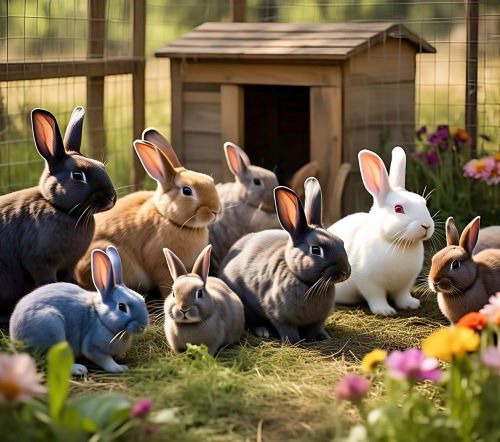
2. Diet: What to Feed Your Giant Bunny:
A balanced diet is essential for keeping your Flemish Giant Rabbit healthy and thriving. Best quality grass hay, consider timothy or orchard grass, should make up the majority of their diet to support digestion and dental health. Supplement the diet with fresh leafy greens (e.g., romaine lettuce, kale, and cilantro) and a measured portion of rabbit pellets (preferably high-fiber and timothy-based for adults).
Treats like small pieces of fruit (e.g., apple or banana) can be given sparingly. Always ensure freshwater is available, preferably in a heavy bowl or sipper bottle to accommodate their large size. Avoid sugary, starchy, or processed foods, as these can lead to obesity and digestive issues in these gentle giants.
Weekly Feeding Schedule for Flemish Giants:
Kits (0-3 months)
| Day | Morning | Evening | Notes |
| Mon-Sun | Unlimited alfalfa hay | ¼ cup high-protein pellets (18%) | Always fresh water. No veggies yet. |
Juveniles (4-8 months)
| Day | Morning | Evening | Notes |
| Mon-Fri | Unlimited alfalfa hay | ¼ cup pellets + 1 cup leafy greens (kale, romaine) | Introduce veggies slowly. |
| Sat-Sun | Timothy hay (50/50 mix) | ½ cup pellets + herbs (parsley, cilantro) | Monitor stool for digestion issues. |
Adults (9+ months)
| Day | Morning | Evening | Notes |
| Mon-Sun | Unlimited timothy hay | ¼ cup pellets + 2 cups varied veggies (bell peppers, bok choy) | Limit fruit to 1x/week (e.g., apple slice). |
3. Flemish Giant Rabbit Grooming: Keeping Their Coat Shiny & Healthy:
Despite their large size, Flemish Giants have a dense, glossy, short- to medium-length coat that requires regular grooming to stay clean and tangle-free. Here’s how to maintain their coat and overall hygiene:
Brushing Frequency:
- Weekly brushing (minimum): Use a slicker brush or soft-bristle brush to remove loose fur and prevent matting.
- During shedding seasons (spring/fall): Brush 2 to 3 times per week to reduce hair ingestion (prevents GI stasis).
- Flemish Giants shed heavily, so extra grooming helps avoid fur blockages.
Best Brushes for Flemish Giants:
- Slicker brush (for removing loose fur).
- Rubber grooming mitt (gentle for sensitive skin).
- Fine-tooth comb (for checking tangles, especially around hindquarters).
Bathing in Flemish? (Spoiler: Rarely Needed!)
- Bathing rabbits, not just your Flemish rabbit, should only occur when medically necessary, as water can lead to shock or hypothermia.
- Spot-clean with a damp cloth if dirty (e.g., urine stains on feet).
- Dry shampoo (cornstarch-based) can help clean fur without water.
Nail Trimming of Flemish Giant:
- Trim nails every 4–6 weeks (their large size means faster nail growth).
- Use rabbit-safe clippers and avoid the quick (pink) vein inside the nail.
- If unsure, ask a vet or groomer for a demo.
4. Ear & Dental Care of Flemish Rabbit:
- Check ears weekly for wax buildup or mites (clean gently with a vet-approved solution).
- To maintain dental health, provide unlimited hay to help naturally wear down teeth and prevent overgrowth.
5. Preventing Fur Mats & Stains:
- Mats often form under the chin, chest, and hindquarters. Gently tease them apart with fingers or scissors (carefully!).
- Urine stains? Keep the litter box clean and trim fur around the rear if needed.
6. Diet for a Healthy Flemish Coat:
- High-quality hay (70% of diet)—Timothy or orchard grass keeps digestion smooth.
- Consume fresh greens such as kale and parsley to replenish vitamins.
- Limited pellets (1/4 cup per 5 lbs of body weight).
- Omega-3s (flaxseeds or a tiny bit of chia seeds) can boost coat shine.
7. Signs of Grooming-Related Health Issues:
- Excessive scratching may indicate the presence of mites or fleas.
- Patchy fur loss → Check for parasites or stress.
- Wet or stained fur may indicate dental issues or urinary problems.
Final Tips:
- Grooming = Bonding Time! Gently brushing many Flemish Giants leads to their enjoyment.
- Never shave their coat (rabbits regulate temperature through fur).
- Reward with treats to make grooming a positive experience.
Common Health Issues in Flemish Giants & Prevention Tips
Flemish Giants are generally hardy, but their large size makes them prone to certain health problems. Common issues include sore hocks (from hard surfaces), obesity (leading to joint stress), GI stasis (digestive slowdown), and dental problems (due to improper wear). Proper diet, spacious housing, and regular vet checks can keep them healthy.
Flemish Giant Health Issues & Prevention
| Health Issue | Causes | Prevention Tips |
| Sore Hocks | Hard flooring, obesity | Use soft bedding, maintain healthy weight |
| Obesity | Overfeeding, lack of exercise | Balanced diet, daily exercise, limit treats |
| GI Stasis | Low fiber, dehydration, stress | High-fiber hay, fresh water, reduce stress |
| Dental Problems | Malocclusion, poor diet | Unlimited hay, chew toys, vet checkups |
By monitoring their diet, habitat, and behavior, you can help your Flemish Giant live a long, healthy life! 🐰💙
Flemish Giant Rabbit Colors: A Rainbow of Options
The Flemish Giant Rabbit boasts a stunning array of colour variations, recognized in both standard and non-standard shades. These majestic rabbits can display solid, shaded, or agouti (banded) coats, with some exhibiting subtle gradients or striking contrasts.
Whether sleek and monochromatic or softly blended, their luxurious fur contributes to their regal appearance, making each Flemish Giant a unique and captivating specimen.
The American Rabbit Breeders Association (ARBA) recognise seven standard Flemish Giant rabbit colours:
- Black
- White
- Blue
- Fawn
- Light Gray
- Sandy
- Steel Gray
Each color has specific standards for shows, with the fur being dense, glossy, and having a distinctive “rollback” quality when stroked.

Flemish Giant Rabbit Colors Chart (ARBA Standard of Perfection Guidelines):
| Color | Temperament Notes | Show Requirements | Unique Traits |
| Black | Calm, confident | Deep jet-black fur, no rust/white hairs | Glossy blue-black sheen under light |
| Blue | Gentle, slightly shy | Uniform slate-blue, no fading/patches | Rare color, prized in shows |
| Fawn | Playful, social | Rich golden-orange with white undercoat | Belly & tail must be white |
| Light Gray | Curious, active | Even pepper-gray with white undercut | “Agouti” banding on hairs |
| Sandy | Laid-back, sweet | Light tan with pinkish undertones | Resembles fawn but softer hue |
| Steel Gray | Bold, energetic | Dark gray with metallic blue sheen | Guard hairs must be black-tipped |
| White | Docile, people-oriented | Pure white, no yellowing | Ruby-eyed (REW) or Blue-eyed (BEW) |
Key Show Rules (ARBA Standards)
🔹 Disqualifications:
- Broken patterns or mixed colors must remain solid.
- There should be no rusty or off-color patches, such as yellow on white.
- Eyes are not matching the color standard (e.g., BEW with pink eyes).
🔹 Winning Traits:
- Fur: Dense, glossy, 1–1.5″ long with “roll-back” texture.
- Body: Semi-arched “mandolin” shape (no flat backs).
- Weight: Bucks ≥13 lbs, Does ≥14 lbs (US standards).
Temperament Trends by Color:
- Dark colors (black/steel gray): Often bolder.
- Light colors (white/fawn): Typically mellower.
- Rare colors (blue/sandy): May be pricier due to demand.
Pro Tip: While color can hint at personality, individual temperament varies more by breeding/socialization!
(Source: ARBA Official Standard of Perfection)
Flemish Giant Rabbit Lifespan: How Long Do They Live?
With proper care, the average Flemish Giant rabbit lifespan is
- 8-10 years for pets
- 5-7 years for breeding stock
- Up to 12 years in exceptional cases
Factors affecting their lifespan include diet, housing conditions, genetics, and veterinary care. Their Flemish Giant rabbit size doesn’t necessarily mean a shorter lifespan—with proper care, they can live just as long as smaller breeds.
The Flemish Rabbit Growth Chart (Birth to Adulthood):
| Age | Weight | Body Shape | Ear Development | Diet Plan |
| Newborn (0-2 weeks) | 3–5 oz (85–140 g) | Tiny, fragile, no fur (initially) | Short, folded ears | Mother’s milk only (critical for immunity & growth). No solid food. |
| 3-6 weeks | 1–2 lbs (0.5–1 kg) | Fuzzy fur, round body | Ears start to stand (3–4 inches) | Weaning phase: Introduce alfalfa hay + pellets (high protein, 18%). Unlimited water. |
| 2-4 months | 4–8 lbs (2–3.5 kg) | Legs lengthen, less round | Ears grow rapidly (5–6 inches) | High-growth diet: Unlimited alfalfa hay + ½ cup pellets/day + fresh greens (kale, parsley). |
| 5-8 months | 9–15 lbs (4–7 kg) | Muscular, elongated body | Ears near full length (6–7 inches) | Transition diet: Mix alfalfa & timothy hay. Reduce pellets to ¼ cup/day. More leafy greens. |
| 9-12 months | 15–20 lbs (7–9 kg) | Near adult size, broad chest | Ears full size (7–8 inches) | Adult diet: Timothy hay (unlimited), ¼ cup pellets, veggies (romaine, cilantro). Limit fruit. |
| Adult (1.5+ years) | 15–30+ lbs (7–14+ kg) | Massive, muscular frame | Ears 8+ inches (if record-sized) | Maintenance diet: 70% hay, 20% veggies, 10% pellets. Avoid obesity! |
Flemish Giant Meat: Considerations for Homesteaders:
Flemish Giant bunnies are one of the largest rabbit breeds, making them a good choice for meat production. Because of their size, they provide more meat than smaller breeds, but they also take longer to grow and need more food. Their meat is lean and mild-flavored, similar to chicken.
However, some homesteaders prefer smaller, faster-growing breeds for meat because they reach butchering size quicker. Flemish Giants can also be used for fur, as their thick pelts are soft and durable. If you raise them for meat, make sure they have plenty of space, a healthy diet, and proper care to stay strong and healthy.
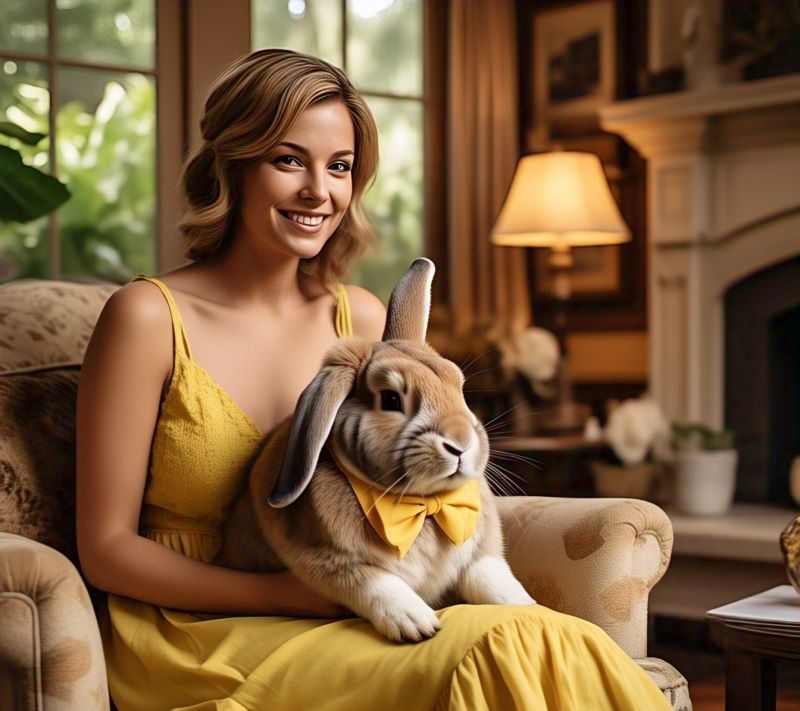
Comparison of Rabbit Breeds for Meat & Fur Production:
| Breed | Avg. Weight | Growth Speed | Meat Quality | Fur Quality | Best For |
| Flemish Giant | 15–22 lbs | Slow (8 to 12 months) | Lean, tender | Thick, soft | Meat (large cuts), fur |
| New Zealand White | 9–12 lbs | Fast (5 to 6 months) | Tender, mild | Short, glossy | Meat (most popular) |
| Californian | 8–11 lbs | Fast (5 to 6 months) | Firm, flavorful | Dense, plush | Meat & fur |
| Rex | 7–10 lbs | Medium (6 to 8 months) | Very tender | Velvety, luxurious | Best for fur, good meat |
| Silver Fox | 9–12 lbs | Medium (6 to 8 months) | Juicy, firm | Thick, silvery | Meat & fur |
Key Takeaways:
- Best for quick meat: New Zealand White, Californian.
- Best for fur: Rex (super soft), Silver Fox (shiny).
- Best for large meat cuts: Flemish Giant (but slower growth).
Where to Buy a Flemish Giant Rabbit: Responsible Sources
If you’re wondering where you can buy a Flemish Giant rabbit, consider these options:
- Reputable Breeders (expected to pay)
- 50−150
- 150−300)
- Look for ARBA-registered breeders.
- Visit the National Federation of Flemish Giant Rabbit Breeders website.
- Rabbit Shows (great for meeting multiple breeders)
- 4-H Programs (often have quality stock)
- Rescues (check House Rabbit Society listings)
When searching for a Flemish Giant rabbit for sale, always visit the facility in person.
- Visit the facility in person.
- Ask for health guarantees.
- Check pedigrees if buying show stock.
- Avoid pet stores (often poor breeding practices).
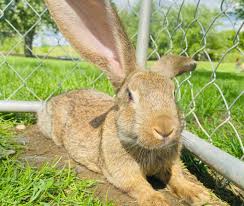
Flemish Giant Rabbits: Pros and Cons:
Flemish Giants are impressive, docile rabbits, but they aren’t for everyone. Here’s a balanced look at their advantages and challenges to help you decide if they are the right fit.
Pros of Owning a Flemish Giant Rabbit:
1. A gentle and friendly personality:
- The Flemish Giant Rabbit is one of the most docile rabbit breeds, rarely exhibiting aggression.
- They get along well with children, seniors, and other pets when properly introduced.
- They often enjoy cuddling and being handled, which is different from skittish small breeds.
2. Impressive size and appearance:
- Their massive size (15–22+ lbs) makes them unique and eye-catching.
- They boast beautiful glossy fur in seven recognized colors, including black, blue, and fawn.
- They enjoy popularity in rabbit shows and 4-H projects.
3. Intelligent & Trainable:
- They are relatively easy to litter-train.
- Some learn simple commands or tricks (like coming when called).
- If given adequate space, they tend to be less destructive than smaller rabbits.
4. Long Lifespan:
- Live 8–10+ years with proper care (longer than many dog breeds!).
- Strong genetics contribute to fewer hereditary issues compared to dwarf breeds.
5. Versatile Uses:
- Originally bred for meat and fur, the Flemish Giant Rabbit is no longer the most efficient breed.
- Their calm demeanor makes them excellent therapy animals.
Cons of Owning a Flemish Giant Rabbit
1. Space Requirements:
- A large cage (minimum 36″x36″x120″) and daily free-roam time are necessary.
- Small apartments are not suitable for this type of rabbit; homes with yards or large rooms are the best options.
2. Higher Costs:
- Food: Eat 2x more hay/pellets than small rabbits.
- Vet bills: Medications and surgeries cost more due to their size.
- Supplies required include extra-large carriers, litter boxes, and toys.
3. Health Risks:
- Prone to sore hocks (from weight on their feet).
- They are more susceptible to GI stasis, a potentially fatal digestive problem.
- Heat sensitivity (thick fur makes overheating dangerous).
4. Not ideal for meat or fur production:
- Compared to New Zealand rabbits, they have a lower meat-to-bone ratio of approximately 55%.
- Fur market demand is low—mostly kept as pets today.
5. Heavy and Strong:
- Can kick hard if scared (risk of injury to kids or themselves).
- Transporting the Flemish Giant rabbit can be challenging, requiring carriers that are the size of a dog.
Conclusion: Is a Flemish Giant Rabbit Right for You?
The Flemish Giant rabbit makes an exceptional pet for those with adequate space.Only their gentle personalities can match their impressive Flemish Giant rabbit size. Whether you are interested in shows, companionship, or small-scale Flemish Giant rabbit meat production, understanding their needs is key to success.
Are you prepared to discover the ideal Flemish Giant rabbit for purchase? Start by contacting reputable breeders through the National Federation of Flemish Giant Rabbit Breeders, and prepare to welcome one of these magnificent creatures into your life!
Pro Tip: Attend a local rabbit show to meet breeders and see adult Flemish Giants in person before making your decision. The Flemish Giant rabbit lifespan means this is a long-term commitment, so choose carefully!
Flemish Giant Rabbit FAQ: Your Top Questions Answered:
1. Can Flemish Giant Rabbits Eat Bananas?
Yes, but in strict moderation!
- Safe Serving: 1-2 thin slices (about 1 tablespoon) 1-2 times per week.
- Why? Because Bananas are high in sugar, which can cause
- Obesity (a risk for their large size)
- Digestive issues (like GI stasis)
- Tip: Always remove the peel—it’s difficult to digest. Pair with hay to balance fiber intake.
2. Do Flemish Giant Rabbits Smell?
No, if cared for properly!
- Natural Odor: Healthy Flemish Giants are nearly odorless. Any strong smell usually indicates
- Dirty cage (clean 2-3x weekly)
- Urine buildup (use absorbent bedding like paper-based litter)
- Diet issues (too many pellets = stronger urine)
- Pro Tip: Spaying/neutering reduces territorial marking odors.
3. Do Flemish Giant Rabbits Bite?
They rarely bite, but they have the ability to do so when provoked.
- Why They Might Bite:
- Fear (sudden movements, loud noises)
- Pain (e.g., sore hocks or dental issues)
- Territorial behavior (especially unspayed females)
- Prevention:
- Handle them gently; let them approach you first.
- Watch for warning signs (grunting, thumping).
- Key Fact: Their size means bites can be serious—always supervise kids.
